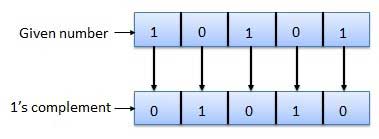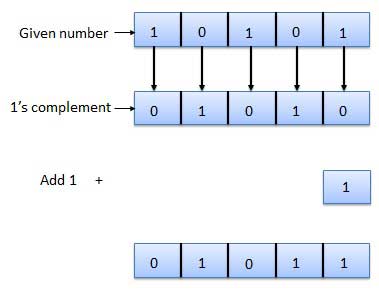Understanding Number Representation Techniques
- Integers can be represented in signed and unsigned ways.
- Signed numbers use a sign flag to distinguish between positive and negative values.
- Unsigned numbers store only positive numbers.
- Techniques include Binary, Octal, Decimal, and Hexadecimal.
- Binary Number System is a popular technique used in digital systems.
- Binary System represents binary quantities with two possible states.
- Binary numbers are indicated by an 0b prefix or a 2 suffix.
- Unsigned binary numbers lack a sign bit, while signed binary numbers use a sign bit to distinguish between positive and negative numbers.
1.Sign-Magnitude form
Sign-magnitude is one way to represent signed numbers in digital logic. In this form, a fixed number of bits are dedicated to representing the sign and the remaining bits represent the magnitude (absolute value) of the number. Here's a breakdown:
Key points:
- Sign bit: The most significant bit (MSB) is used to represent the sign. 0 indicates positive, and 1 indicates negative.
- Magnitude representation: Remaining bits represent the absolute value of the number, using the same format as unsigned numbers.
- Range: For n bits, the representable range is - (2^(n-1) - 1) to + (2^(n-1) - 1), meaning both positive and negative numbers can be represented within the same format.
Example (8-bit representation):
- +43: 00101011
- -43: 10101011
Limitations:
- Inefficient: Two representations exist for zero (positive 0 and negative 0), wasting space.
- Complex arithmetic: Addition and subtraction require different logic depending on the signs, making them more complex than other methods like 2's complement.
- Overflow detection: Detecting overflow conditions is more challenging compared to other representations.
Comparison with other forms:
- 1's complement: Similar to sign-magnitude but uses an inverted version of the magnitude for negative numbers. Less complex addition/subtraction but suffers from negative zero and overflow issues.
- 2's complement: Adds 1 to the 1's complement representation of negative numbers. Eliminates negative zero, simplifies arithmetic, and offers efficient overflow detection. This is the most common representation in modern digital systems.
Applications:
While not widely used in modern digital logic due to its limitations, sign-magnitude has some historical significance and niche applications:- Simple educational tool to understand signed number representation.
- Specialized applications where simplicity is valued over efficiency (e.g., low-power systems).
Addition
A number is represented inside a computer with the purpose of performing some calculations using that number. The most basic arithmetic operation in a computer is the addition operation. That’s why a computer can also be called as an adder.
When adding two numbers with the same signs, add the values and keep the common sign.
Example 1
Add the numbers (+5) and (+3) using a computer. The numbers are assumed to be represented using 4-bit SM notation.
111 <- carry generated during addition 0101 <- (+5) First Number + 0011 <- (+3) Second Number 1000 <- (+8) Sum
Let’s take another example of two numbers with unlike signs.
Example 2
Add the numbers (-4) and (+2) using a computer. The numbers are assumed to be represented using 4-bit SM notation.
000 <- carry generated during addition
1100 <- (-4) First number
+ 0010 <-(+2) Second Number
1110 <- (-2) Sum
Here, the computer has given the wrong answer of -6 = 1110, instead of giving the correct answer of -2 = 1010.
1's Complement
By inverting each bit of a number, we can obtain the 1's complement of a number. The negative numbers can be represented in the form of 1's complement. In this form, the binary number also has an extra bit for sign representation as a sign-magnitude form.
2's Complement
By inverting each bit of a number and adding plus 1 to its least
significant bit, we can obtain the 2's complement of a number. The
negative numbers can also be represented in the form of 2's complement.
In this form, the binary number also has an extra bit for sign
representation as a sign-magnitude form









